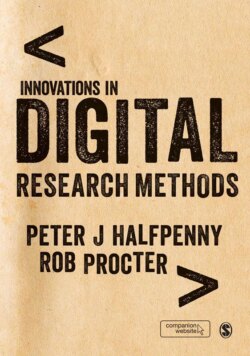Читать книгу Innovations in Digital Research Methods - Группа авторов - Страница 39
На сайте Литреса книга снята с продажи.
2.1.3 Data Origin Typology
Оглавление1 Orthodox intentional data: Data collected and used with the respondent’s explicit agreement. All so-called orthodox social science data (e.g. survey, focus group or interview data and also data collected via observation) would come into this category. New orthodox methods continue to be developed.
2 Participative intentional data: In this category data are collected through some interactive process. This includes some new data forms such as crowdsourced data (e.g. the Everyday Sexism project; see http://everydaysexism.com) and is a potential growth area.
3 Consequential data: Information that is collected as a necessary transaction that is secondary to some (other) interaction (e.g. administrative records, electronic health records, commercial transaction data and data from online game playing all come into this category).
4 Self-published data: Data deliberately self-recorded and published that can potentially be used for social science research either with or without explicit permission, given the information has been made public (e.g. long-form blogs, CVs and profiles).
5 Social media data: Data generated through some public, social process that can potentially be used for social science research either with or without permission (e.g. micro-blogging platforms such as Twitter and Facebook, and, perhaps, online game data).
6 Data traces: Data that is ‘left’ (possibly unknowingly) through digital encounters, such as online search histories and purchasing, which can be used for social science research either by default use agreements or with explicit permission.
7 Found data: Data that is available in the public domain, such as observations of public spaces, which can include covert research methods.
8 Synthetic data: Where data has been simulated, imputed or synthesized. This can be derived from, or combined with, other data types.
We utilize this typology further in our discussions below, including the possible overlaps between the data origin types, and how the different types may be used, but we first focus in more detail on the changing nature of the data environment and social science research.
